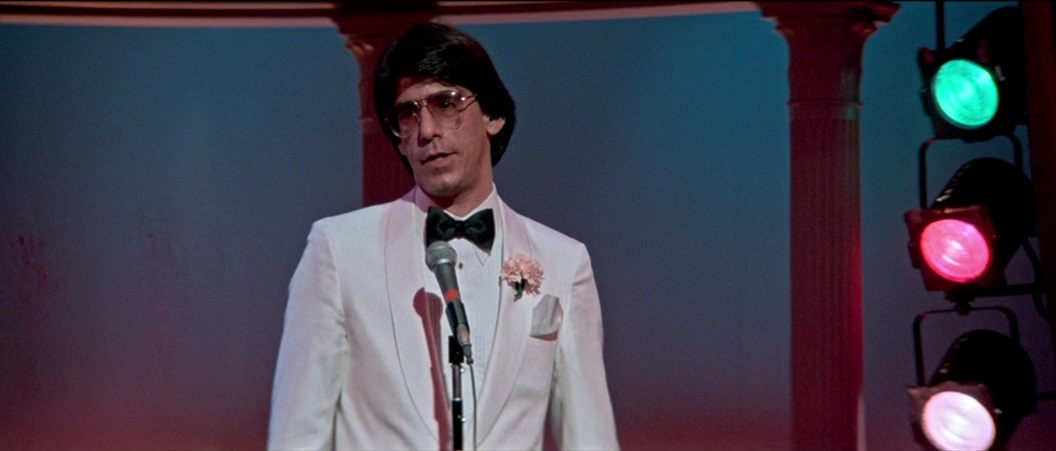AUDIENCE-ENGAGING COMEDIAN MOVED INTO ACTING, APPEARED IN 'SCARFACE' & 'BONFIRE'

Richard Belzer, the stand-up comedian and actor who appeared in Scarface and The Bonfire of the Vanities, passed away early Sunday. He was 78.
In a The Hollywood Reporter obituary, Chris Koseluk writes that Belzer found "further fame as the cynical but stalwart detective John Munch on Homicide: Life on the Street and Law & Order: Special Victims Unit." Koseluk continues:
Belzer died early Sunday at his home in Bozouls in southwest France, writer Bill Scheft, a longtime friend of the actor, told The Hollywood Reporter. “He had lots of health issues, and his last words were, ‘Fuck you, motherfucker,'” Scheft said.Belzer made his film debut in the hilarious The Groove Tube (1974), warmed up audiences in the early days of Saturday Night Live and famously was put to sleep by Hulk Hogan.
Munch made his first appearance in 1993 on the first episode of Homicide and his last in 2016 on Law & Order: SVU. In between those two NBC dramas, Belzer played the detective on eight other series, and his hold on the character lasted longer than James Arness’ on Gunsmoke and Kelsey Grammer’s on Cheers and Frasier.
Certainly one of the most memorable cops in TV history, Munch — based on a real-life Baltimore detective — was a highly intelligent, doggedly diligent investigator who believed in conspiracy theories, distrusted the system and pursued justice through a jaded eye. He’d often resort to dry, acerbic wisecracks to make his point: “I’m a homicide detective. The only time I wonder why is when they tell me the truth,” went a typical Munch retort.
In a 2016 interview for the website The Interviews: An Oral History of Television, Homicide executive producer Barry Levinson recalled listening to Belzer on The Howard Stern Show and liking him for Munch. “We were looking at some other actors, and when I heard him, I said, ‘Why don’t we find out about Richard Belzer?” Levinson said. “I like the rhythm of the way he talks. And that’s how that happened.”
At the New York Times, Jason Zinoman delves into Belzer's stand-up days:
When Richard Belzer did stand-up on “Late Night With David Letterman,” he always entered to the opening riffs of “Start Me Up” by the Rolling Stones, dancing his way onstage, looking like the life of the party in dark shades. Once he arrived at the microphone, he made a point of engaging with the studio audience in a way you rarely saw on television. More than once, he asked, “You in a good mood?” and waited for a cheer. Then his tone shifted: “Prove it.”With that opening pivot, he turned the relationship between comedian and crowd upside-down. The expectation was now on the people in the seats: Impress me.
Belzer, who died Sunday, is best known for his performances as a detective on TV, but his acting career was built on a signature persona in comedy, as a master of seductive crowd work who set the template for the MC in the early days of the comedy club. Often in jackets and shirts buttoned low, he cut a stylish image, spiky and louche. He could charm with the best of them, but unlike many performers, he didn’t come off as desperate for your approval. He understood that one of the peculiar things about comedy is that the line between irritation and ingratiation could easily blur.
Throughout the 1970s, he ran the show at the buzziest of the New York clubs: Catch a Rising Star, stand-up’s answer to Studio 54. He roasted the crowds while warming them up, quizzing them about where they were from and what they did, establishing rapport and dominance. Long before Dave Chappelle dropped the mic at the end of shows, Belzer regularly did so.
If the crowd wasn’t laughing, he could lay on a guilt trip: “Could you be a little more quiet? Because I’m going to have a nervous breakdown.” And if someone heckled, look out. According to a story from the comic Jonathan Katz, one night someone in the crowd yelled, “Nice jacket!” and Belzer responded that he got it on sale in his mother’s vagina.
























